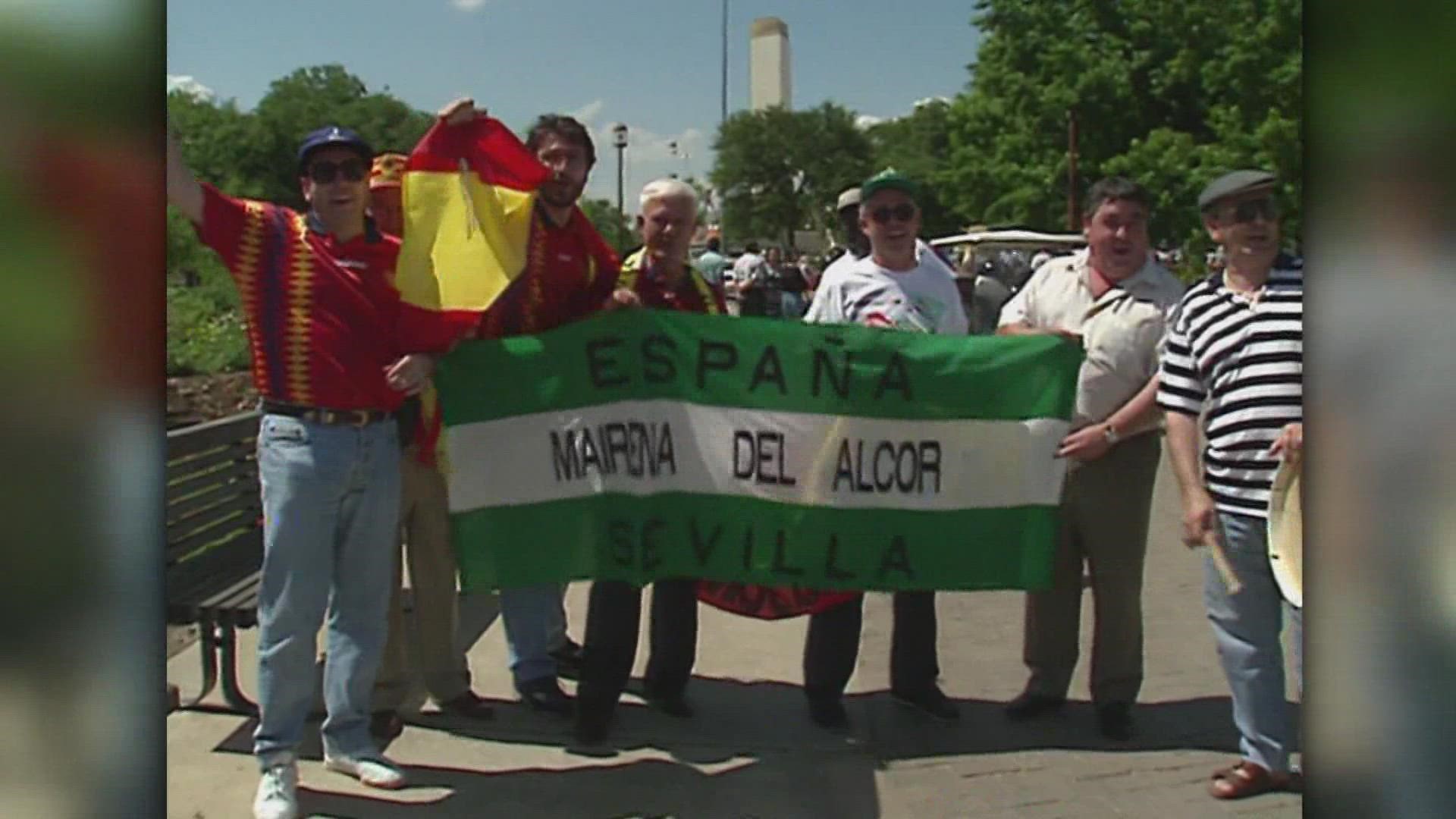DALLAS — Fans in Downtown Dallas rejoiced on Thursday when North Texas was named one of the host sites for the 2026 World Cup. Of the 11 American sites chosen, DFW is one of just 5 that will be hosting for the second time.
And the impacts of the first go-around in 1994 are easy to spot in Frisco.
“It was transformative,” said FC Dallas President Dan Hunt. “There was no bigger moment for soccer in this country.”
The 1994 World Cup is credited for causing a youth soccer boom, the creation of Major League Soccer and finally putting the world’s most popular sport on the map in the United States.
But despite its legacy as a landmark event, Hunt recalls the success was not so obvious at the time.
“America really was not ready," Hunt said.
Dan’s father, Lamar Hunt, was the chairman of the Dallas Host Committee and young Dan served as a ball boy for the Spain-South Korea match at the Cotton Bowl on June 17, 1994, the first of six games played in Dallas.
It was clear from all the foreign flags and cheers, the world had come to Dallas to watch even if locals did not match the enthusiasm. There were still empty seats at the Cotton Bowl that day and attendance at the Dallas matches lagged behind the rest of the country.
“It was a novel thing,” Hunt said. “It was not understood by most Americans.”
Maybe it was because local fans were distracted. The Dallas Cowboys were dealing with the aftermath of a Super Bowl win followed by a highly controversial coaching change. The Texas Rangers were playing their very first season in the brand-new Ballpark in Arlington. And while the World Cup games were being played, the Dallas Mavericks drafted a highly touted point guard by the name of Jason Kidd.
Or perhaps it was because the USA National Team had yet to give the country a reason to get interested. Though they qualified for the 1990 World Cup four years earlier, that was their first appearance in 40 years and the players who filled out the
The 1994 roster was still relatively unknown.
Even with the tepidness of local fans and media, the roots were being planted. Team USA advanced out of the group stage for the first time since 1930 and players like Alexi Lalas and Eric Wynalda became recognizable athletes on the national sports scene. Financially, it was the most successful World Cup at the time, leading to fields, facilities and player development programs like the ones that surround FC Dallas.
“Whether they came from our academy, our first team, or draft picks, nearly a third of the US Men’s National Team has FC Dallas roots,” Hunt said.
Originally known as the Dallas Burn, FC Dallas was one of the original 10 teams in the MLS inaugural season in 1996. Today, the league has 28 teams. The home of FC Dallas, Toyota Stadium, sits on a street called World Cup Way in Frisco adjacent to a 17-soccer field complex and is adjoined to the National Soccer Hall of Fame.
Hunt said with 11 American cities hosting games in NFL stadiums, the 2026 World Cup will top the financial success of the 1994 Cup. And unlike 1994, America is knowledgeable and ready for what is coming and that presents an opportunity to take the next step.
“The economics of this will be unbelievable," Hunt said. "Hopefully there is a ton of money that ends up at US Soccer so they continue to invest in facilities. I think this will speed up the development of the player pool by 10-20 years.”

